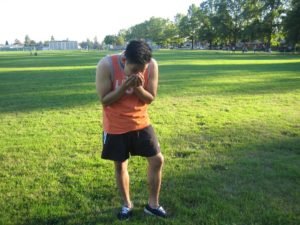An allergy to peanut butter is one of the common types of food allergies especially among children. An individual with peanut allergy is highly sensitive to the proteins present in peanuts and can cause mild or severe reactions after consumption. Some of the common symptoms of allergy to peanut butter include allergy rashes, nasal congestion and digestive issues. If the individual notices adverse reactions to peanut butter after ingestion, a doctor should be consulted as soon as possible so that proper assessment can be carried out.
Close look on peanut allergy
When an individual experiences an allergic response after ingestion of peanut butter, the body overly reacts to the proteins present in peanuts. Instead of reacting to the proteins as safe, the immune system perceives the proteins as if they are a threat to the body. This results to various chemical reactions such as the production of antibodies and histamine. Take note that the histamine is the chemical in the body that causes inflammation and irritation in the soft tissues.

Allergy rashes
The main allergy rashes from peanut allergy are hives, eczema and generalized itchiness and redness. The hives typically manifest within a few minutes after consuming peanut butter or foods that contain it. Hives can manifest on any part of the body and manifest as red, elevated clusters of welts that are intensely itchy. As for eczema, it is an allergic skin rash that develops small-sized blisters that weep and crust over. In addition, this skin rash causes patches of skin that are itchy and leathery. These rashes can cause discomfort to many individuals.
Accompanying symptoms
There are other symptoms of an allergic reaction to peanut butter that can occur along with skin rashes. These include nasal congestion, sneezing, diarrhea, cramping, asthma and vomiting. The asthma symptoms can also develop such as difficulty breathing, wheezing, coughing as well as shortness of breath and chest pain. In addition, nasal congestion can lead to sinus pressure all over the face and postnasal drip.
Anaphylaxis
One of the initial indications of anaphylaxis is hives that can occur along with other symptoms. Take note that anaphylaxis is a systemic, severe allergic reaction that can result to death. This reaction causes high levels of histamine all over the body to increase, resulting to a state of shock.
Other symptoms that can occur along with hives include anxiety, dizziness, low blood pressure and increased heart rate. If the individual experiences these symptoms, call for emergency assistance right away or simply bring the individual to the nearest emergency department.
Treatment
The allergy rashes are managed by taking an oral antihistamine and apply a topical hydrocortisone cream. In most cases, the doctor will recommend antihistamines and hydrocortisone creams that works by reducing the swelling and itchiness of the skin.
